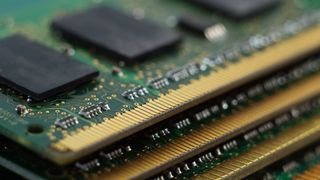
Retail theft, both external and internal, is costing Australian businesses up to A$9 billion each year. Tougher penalties against criminals, better education on the impacts of retail crimes, and more informed data on the prevalence of it have all been proposed as ways to lower retail crime. However, retailers may also soon turn to more innovative ways to stem retail theft.
Retailers are considering weaving radio-emitting threads into some clothing, turning the garments themselves into anti-theft devices, according to Bloomberg. Zara owner Inditex is reported to have consulted with a small Spanish technology company, Myruns, and telecommunications operator Telefónica about the possible application of a system based on an anti-theft alarm product. An Inditex spokesman says the company does not plan to carry out in-store tests of the technology.
Myruns’ product, which is believed to be five times thinner than a human hair, or about a thousandth of an inch, uses a conductive ink derived from cellulose to transmit signals. It can trigger alarms if someone walks out of a shop with items whose woven-in tags haven’t been deactivated. The ink replaces aluminum which is used in most alarms.
Retailers wouldn’t need to rely on the metal for alarms, making the devices potentially biodegradable and supporting the garments’ recyclability. Inditex last year announced it would replace hard plastic alarms on garments that require clerks to remove them with a new security technology to enable self-checkout in stores. This system initially relied on small microchips affixed to the labels, but shoplifters soon figured out how to remove them.
Myruns’ technology could prove harder for thieves to dislodge. Retail theft is a major problem for retailers. “Retail crime costs us all.
Every single incident erodes profitability for businesses, increases the cost of goods to consumers, endangers frontline staff while also wasting their time, and ultimately reduces the appeal of our retail precincts to customers,” said a statement from the National Retail Association (NRA) earlier this year which teamed up with the Australian Retailers Association (ARA) to address the problem. Last year, Costco Wholesale’s former chief financial officer, Richard Galanti, blamed an increase in losses a few years ago on the company’s rollout of self-checkouts. Target also shut down multiple stores in the US where retail crime proved to be beyond control.
As ChannelNews reported recently, some retailers such as JD Sports have moved to use a unique DNA spray system to identify thieves. It partnered with forensic security company SelectaDNA to roll out the marking system which will initially be rolled out in its UK stores. The tagging sprays work by leaving a synthetic DNA and a UV marker on property and criminals, which can then be used to link assets to owners and criminals to crime scenes.
SelectaDNA property markers contain thousands of microdots which allow Police to identify property at the scene in a matter of seconds. UV tracers are incorporated in SelectaDNA to make it easy for Police to find thieves who have been sprayed with SelectaDNA and property that has been marked. Earlier this year, Officeworks partnered with Appriss Retail, a data and analytics solution provider, to reduce shrinkage in its stores using Appriss’s Secure solution.
The move came as incidents of retail theft surged by a reported 55.7 per cent in Greater Sydney and Regional NSW between 2018 and 2023. Appriss Retail provides AI-driven analytics and real-time integrated recommendations to identify and mitigate theft, fraud, and abuse.
At the Retail Crime Symposium held in Melbourne in July, the NRA and ARA called on governments to fund packages for small businesses to increase the uptake of security equipment. It noted that small businesses are most vulnerable in a retail crime epidemic. “The responsible adoption of technology can be a game-changer.
AI-driven security systems, smart cameras, and predictive analytics can detect suspicious activities before they escalate. A collaborative tech front can adapt to the sophisticated methods used by criminals, ensuring a more secure retail environment,” stated the NRA..














